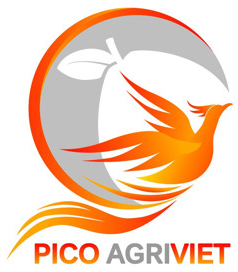Pico Agriviet Company
SPAIN: THE DROUGHT BRINGS THE HARVEST FORWARD AGAIN AND THREATENS A 12% DROP IN PRODUCTION
Pico Agriviet
![]()
The drought and high temperatures in spring have once again caused the grape harvest to be brought forward this year in several areas of Spain and threaten to cause a drop in production that could be as much as 12%, due to the rains in June they were not enough.
A situation that has been repeated for some years now for the early grape varieties, such as chardonnay, sauvignon blanc, verdejo, muscatel, syrah or merlot, and in areas of Córdoba, Huelva, Castilla-La Mancha and Madrid, due to the fact that the high temperatures arrive strongly ahead of time and accelerate maturation.
“Every year there are four or five days before harvesting each type of grape begins,” the technical manager of the wine sector of the Asaja agricultural organization, José Ugarrio, told Efeagro, as a consequence of climate change that has moved to the middle of the month of July the beginning of the grape cutting.
This expert has illustrated the advancement of the grape harvest that is causing climate change, recalling that “20 or 30 years ago”, when the Pilar festival arrived, on October 12, the grape harvest was still taking place, while now on that date “no there is absolutely no one left harvesting”.
The later varieties, such as the red tempranillas or the white airen, are currently continuing their cycle and their maturation is not as advanced as last year.
But if the high temperatures are maintained for a long time, “their harvest may be brought forward again,” Joaquín Vizcaíno, the head of the wine sector of the agrarian organization COAG, told Efeagro.
The general director of the Spanish Wine Federation (FEV), José Luis Benítez, observes this year an advance of between seven and ten days in certain areas, although he points out that “there are still a few weeks left for it to be generalized throughout the country”, where there is a planted vineyard area of almost 938,000 hectares.
Benítez told Efeagro that the harvest “is marked by a persistent drought that has significantly affected the crop” in some regions, while in others “fruit set coincided with episodes of extreme heat.”
HARVEST FORECASTS
“With all this, the harvest forecasts today is that it can be maintained around the average of recent years, probably with a slightly lower quantity than last year (40 million hectoliters),” he said. .
Vizcaíno, for his part, has indicated that production this year could fall by around 12% and remain between 35 and 36 million hectoliters.
The COAG representative explained that, although after the rains in June it seemed that the harvest this season would not vary much from the previous one, later “it has been seen that there have been areas, especially within the Mediterranean arc, where enough water has fallen.”
One of them is Catalonia, where four protected designations of origin have been authorized to temporarily modify their specifications, during the 2023-2024 campaign, in order to minimize the consequences of water stress.
In the largest producing region of Spain, Castilla-La Mancha, Cooperativas Agro-alimentarias has estimated that the harvest will decrease by 12%, up to 20 million hectoliters of wine and must, due to the drought, to which the vine has been subjected. since the previous vintage, and a very dry and hot summer.
The harvest in this area has already begun, although for the moment only in a “testimonial way” and for some certain varieties, Asaja points out.
THE EARLIEST VINTAGES
The most advanced harvest, the most advanced in all of continental Europe, has been that of the Montilla-Moriles denomination of origin, in Córdoba, which began in mid-July, two weeks before last season.
The president of the Asaja Córdoba Vineyard Sector, Juan Manuel Centella, has assured that it is “a worrisome vintage” because it is unknown how the drought and the weather will really affect production, which last season was the lowest in history, with 30 million kilos of grapes.
At the beginning of the second half of July, grapes also began to be cut in the wineries of the Condado de Huelva denomination of origin, several days before last year, for the same reasons.
The situation is replicated in Las Moradas de San Martín, in Madrid, where they began harvesting in July for the first time in their history, some three weeks earlier than the average.
Source: https://www.agrodiario.com/texto-diario/mostrar/4396385/sequia-vuelve-adelantar-vendimia-amenaza-merma-12-produccion
# VIETNAM FRUIT EXPORTER
# VIETNAM FRUIT SUPPLIER
# FRUIT COMPANY VIETNAM

